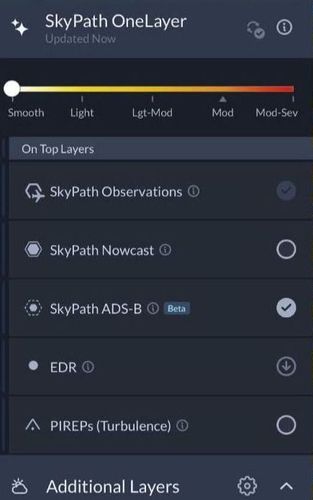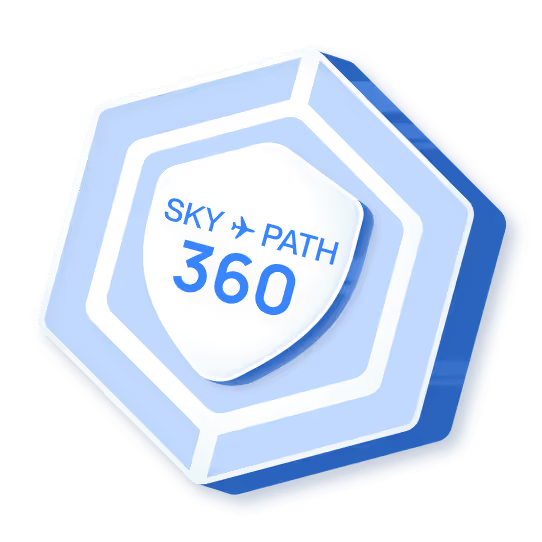Turbulence can be defined as the irregular movement of air masses, causing significant changes in attitude and/ or altitude. It may occur as a result of atmospheric pressure changes, air around mountains, weather fronts or storms, or jet streams. Felt within the cabin and flight deck, the effects can range from light turbulence that creates discomfort, to severe turbulence that can cause serious injury to passengers and crew members.
While the occurrence of turbulence is growing, it is a normal part of flying. It is not dangerous to the airplane itself, which is built to withstand it. However, it does impact ride quality. So, the aviation industry is focused on finding ways to avoid it.
Types of turbulence
There are a few types of turbulence, some of them associated with convective activity and others not:
- Clear Air Turbulence (CAT) is defined as sudden turbulence occurring in cloudless regions, causing violent buffeting of aircraft. This term is commonly applied to the type of higher altitude turbulence associated with wind shear. A more comprehensive definition would be: high-altitude turbulence encountered outside of convective clouds.
- Mountain Waves occur when air flows over a mountain or other terrain feature, creating turbulence in the lee of the terrain feature. This may produce violent and, for smaller aircraft, potentially uncontrollable effects, resulting in pitch and/ or roll of the plane to extreme positions.
- Convective Turbulence occurs when air is heated by the earth’s surface. Hot air rises and causes strong air displacement. Convection associated with high humidity leads to the formation of thunderstorms that can cause turbulence.
Convective Turbulence can be avoided by using onboard weather radar to detect convective activity. However, clear air turbulence (CAT) is more difficult to predict, because it is not associated with clouds and there are no physical sensors that can detect it. Air crews rely mostly on forecasts to deal with CAT, but predicting its exact location and severity is a significant challenge.
Turbulence severity
Air turbulence is reported and forecasted on a relative scale, based on its perceived or potential impact on a ‘typical’ aircraft.
- Light turbulence is the least severe and causes slight, erratic changes in the aircraft’s attitude and/ or altitude.
- Cabin – May cause some discomfort to passengers.
- Flightdeck - No effect on aircraft control.
- Moderate turbulence is more intense than light turbulence and may cause variations in speed, altitude and attitude, but the aircraft remains under control at all times.
- Cabin - Service is significantly affected.
- Flightdeck - Requires crew attention for aircraft control.
- Severe turbulence causes large, abrupt changes in attitude and altitude, as well as large variations in airspeed.
- Cabin – Anything not secured, including crew, passengers or equipment, may be thrown around, with risk of serious injury.
- Flightdeck – May pose control issues for some time. Significant changes in altitude and attitude may occur.
- Extreme turbulence can cause structural damage to the aircraft and result in prolonged, possibly terminal, loss of control.
- Cabin – Serious, possibly fatal, injuries to crew and passengers.
- Flightdeck – Aircraft control will be seriously challenging. Aircraft integrity may be challenged.

Climate change and turbulence
The climate change is leading to more turbulence during flights, increasing the risks for passengers and crew, and driving up costs, according to new research carried out by Professor Paul D. Williams, University of Reading. The study found that warmer air, caused by carbon emissions, is creating bumpier flights around the world, with severe turbulence in the North Atlantic up by 55% since 1979.
Turbulence is the leading cause of injuries to cabin crew and passengers in non-fatal accidents. During severe turbulence, passengers may be thrown against their seat belts or, if they are not wearing them, injured as they are tossed upwards or forwards. As well as the risk of injuries to passengers and flight attendants, every additional minute spent traveling through turbulence increases wear and tear on the aircraft. Airlines need to start thinking about how they will manage this increased turbulence, as it costs the industry up to $500M annually in the USA alone.
Industry challenges
The challenge the industry faces is the lack of accurate forecasts and information on turbulence. To predict its location, pilots use a combination of their own experience, looking at the weather ahead, data from an aircraft-mounted weather radar, weather reports, satellite images, and reports from other pilots who have just experienced turbulence themselves. If the pilot judges it to be too uncomfortable or unsafe to proceed, they can request routing or altitude changes. However, unfortunately, currently-available tools are insufficient, and forecasts are lacking. In most cases, this means pilots and their crews have to react to the situation as it arises, instead of being able to manage it.
To mitigate the impact of turbulence, it is essential to implement advanced tools that can accurately predict such events. SkyPath is a unique concept in the conservative commercial aviation industry. Instead of relying on yet another costly sensor, this crowdsourcing-based platform provides pilots and NOC teams with real-time, precise turbulence reports and predictions. These reports are automatically normalized for each aircraft type and can be easily accessed through an EFB or web tools. Additionally, the system proactively notifies pilots of turbulence ahead of time, enabling them to take immediate action, such as requesting an alternative route or instructing passengers and crew to fasten their seat belts.
Conclusion
In conclusion, while turbulence is a normal part of flying and not dangerous to aircraft, it can cause discomfort, fear, and injury to passengers and crew. The climate crisis is leading to more turbulence during flights, increasing the risks for passengers and crew, and driving up costs. By taking action today, the aviation industry can ensure a better, safer future.




